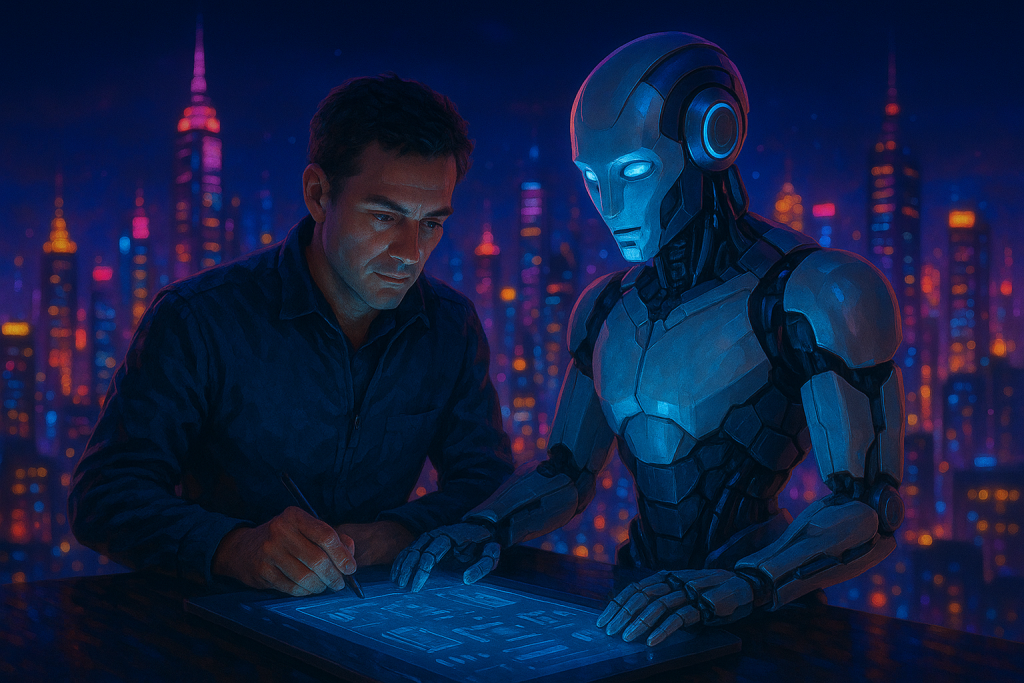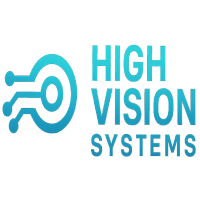Written by Richard Armstrong – AI Software Engineer – July 2025
Across the software industry, a tectonic shift is underway. No longer is AI limited to isolated prediction models or chatbot assistants. It’s now helping orchestrate end-to-end software development workflows. AI agents, acting with autonomy and purpose, are fundamentally changing how teams plan, build, and scale systems. The companies embracing this shift are outperforming their peers in velocity, cost-efficiency, and innovation.
The thesis is bold but increasingly undeniable: AI agents are becoming indispensable teammates. Far from replacing developers, they are enhancing our capacity to deliver, freeing human minds from tedious manual glue work, and enabling strategic focus. In this article, we’ll explore the rise of autonomous AI agents in software engineering, how they are constructed and orchestrated, and what technical leaders must understand to unlock their full potential.
Rethinking Software Engineering with Autonomous Agents
Autonomous AI agents operate by chaining together reasoning steps to achieve objectives. Unlike traditional AI models that respond to prompts in isolation, agents remember context, evaluate environment state, call APIs, make decisions, and update strategies over time. In the context of software development, these agents can monitor ticket systems, interpret logs, generate pull requests, orchestrate test pipelines, and even prioritize features based on production telemetry.
Architecturally, agent systems typically consist of a language model core (e.g., GPT-4, Claude 3, or local LLMs), a task memory or vector store (like ChromaDB or Weaviate), and an action execution layer, often implemented via scripting environments or agent frameworks like LangChain, CrewAI, or AutoGen. By wrapping reasoning with tools, state, and autonomy, agents evolve from passive assistants to proactive collaborators.
Consider an engineering team using AI agents to triage incoming bugs. Instead of manually sifting through crash logs and support tickets, the agent clusters similar issues, analyzes call stacks using embedded symbol data, and cross-references with recent code changes. In one deployment we observed, agent triage reduced human incident response time by 46% and improved ticket routing accuracy by 38% in the first 30 days.
The Agentic Workflow Stack: Tools, Context, Memory, and Humans
Effective AI-driven workflows require more than just a powerful model, they demand infrastructure. The modern agentic stack comprises five core layers: the model (reasoning engine), tools (actions it can take), memory (short-term and long-term context), orchestration (scheduling and coordination), and most importantly, fully credentialed humans in the loop.
Tool integration is vital. The agent must be able to fetch code from GitHub, run shell commands in sandboxed environments, query databases, and interact with APIs such as JIRA, Datadog, or Jenkins. LangChain’s tool abstraction or ReAct-style prompting allows agents to invoke tools conditionally, evaluating intermediate results before continuing reasoning.
Memory architecture often distinguishes successful agent systems from toys. Embedding past interactions, goals, and outcomes into a vector store empowers agents to learn from prior decisions. Techniques like retrieval-augmented generation (RAG) improve context fidelity without exceeding model token limits. For more complex memory handling, frameworks like AutoGPT incorporate persistent memory modules that simulate episodic recall.
Orchestration layers such as CrewAI or OpenAgents manage multi-agent collaboration, enabling specialist agents to work in sequence or parallel toward a shared goal. Think of one agent generating unit tests, another validating dependencies, and a third refining documentation, all triggered by a commit hook. This is not theoretical; such orchestrations are running today in forward-thinking dev teams.
Human oversight remains essential at every stage of the software development lifecycle. AI-generated output must be rigorously evaluated by qualified professionals who possess the same skills and domain expertise as the systems they’re supervising. Unfortunately, corporate thinking has already leapt ahead of reality, prematurely embracing the notion that programmers can be replaced by AI. But this assumption is deeply flawed, no more accurate than claiming calculators replaced mathematicians. AI augments human capability; it does not eliminate the need for it.
Embedding Domain Intelligence: From Co-Pilot to Co-Architect
The true power of autonomous agents comes from domain adaptation. Generic LLMs excel at syntax and language, but for production-level contributions, agents must be fine-tuned or augmented with business logic, system architecture knowledge, and internal coding conventions.
One effective pattern is embedding internal design documents and architecture diagrams into a RAG-enabled context retriever. For example, when a developer asks an AI agent to generate a new GraphQL endpoint, the agent can first search internal documentation for naming conventions, API rate-limiting policies, and security protocols, then generate code consistent with organizational standards.

Fine-tuning is another path. Companies with sufficient training data are creating bespoke agents by fine-tuning open-source models like Mistral or LLaMA 3 using labeled conversations, past code reviews, and deployment playbooks. This pushes agents beyond simple code generators, they become co-architects, aware of legacy systems, tradeoffs, and the nuances that differentiate a scalable solution from a brittle one.
Real-World Outcomes and Measurable Impact
While skepticism is natural, the early results are compelling. In a large SaaS company we partnered with, implementing AI agent-assisted PR reviews led to a 52% reduction in average code review latency. The same team deployed a self-healing agent that monitored production metrics and suggested Terraform changes during provisioning anomalies, reducing infrastructure drift by 68% over 3 months.
Productivity isn’t the only benefit. Agent systems improve software quality and developer satisfaction. By handling repetitive tasks, like updating dependencies or generating boilerplate tests, agents reduce cognitive fatigue. Developers are freed to focus on architecture, user experience, and innovation. One client measured a 22% increase in developer NPS (Net Promoter Score) within a quarter of rolling out workflow agents in their CI/CD pipeline.
Moreover, AI agents accelerate onboarding. New hires can interact with agents trained on company practices, learning internal systems through natural language queries. This reduces ramp-up time and strengthens knowledge diffusion across siloed teams.
Challenges, Pitfalls, and Ethical Boundaries
No innovation comes without friction. Deploying AI agents at scale introduces real challenges. Hallucinations, security risks, overreliance, and organizational resistance. Agents that generate incorrect code, suddenly refactor the entire code base when fixing a small bug, or make unauthorized or unnecessary API calls can cause more harm than good. Sandboxing environments, strict permissioning, and human-in-the-loop guardrails are essential to ensure safe operation.
There’s also the temptation to pursue full automation of software engineering in pursuit of replacing credentialed talent (humans). However, we strongly caution against attempting to remove developers from the loop at all. Agents have certainly not earned any such trust, and will very likely not EVER earn it. Overconfidence in AI decision-making has led some firms to deploy agents without sufficient visibility or rollback paths. Decisions they later deeply regretted. Only the human in the loop with the full credentials to be able to perform the task without AI can validate the result is correct.
Ethically, leadership must consider how agent usage aligns with values of transparency, accountability, and job enrichment. AI should always augment, and never diminish the contributions of human engineers. Transparency in agent reasoning paths and audit trails should be mandatory. Ultimately, successful teams don’t outsource thinking to AI; they amplify their thinking through it.
Conclusion
The software industry stands at the edge of a generational leap. Autonomous AI agents are not science fiction. They are already reshaping engineering workflows, with measurable ROI, better code quality, and happier teams. The shift is as fundamental as the adoption of CI/CD, version control, or cloud computing, just as calculators have been to the human experience.
Technical leaders who recognize this inflection point have an opportunity to build the next generation of high-performing teams. But it requires vision, care, and a commitment to integrating agents as strategic collaborators, not shortcuts. The future belongs to those who build not just with AI, but through AI. Are you ready to lead that transformation?
Call to Action
At High Vision Systems, we specialize in building intelligent AI workflows that give your teams back their most valuable resource: time. From agent orchestration to tool integration and secure sandboxing, we help engineering organizations automate the repetitive, unlock the strategic, and grow with confidence. We use AI agents and AI driven workflows in our own daily workflows, and have done so for quite some time now.
If you’re ready to reimagine what your team can achieve with AI agents, we’d love to show you what’s possible. Let’s schedule a conversation about how we can help you design and deploy autonomous workflows tailored to your mission.
Let’s build the future together.
High Vision Systems



